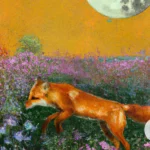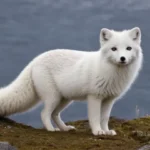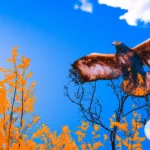In the vibrant tapestry of Japanese folklore, spirit animals take center stage, captivating the imaginations of both young and old. These mystical creatures, deeply rooted in the ancient beliefs of animism and Shintoism, possess profound symbolism and meaning in Japanese culture. From the wise and cunning kitsune (fox) to the mighty tengu (crow and hawk), each spirit animal embodies unique qualities that hold significance in the lives of the Japanese people. Through art, literature, and even modern media such as anime and manga, the presence of spirit animals continues to enchant and inspire, weaving a rich tapestry of tradition and wisdom. Join us on a journey into the realm of Japanese folklore as we explore the captivating world of spirit animals and their enduring importance.
The Concept of Spirit Animals in Japanese Culture
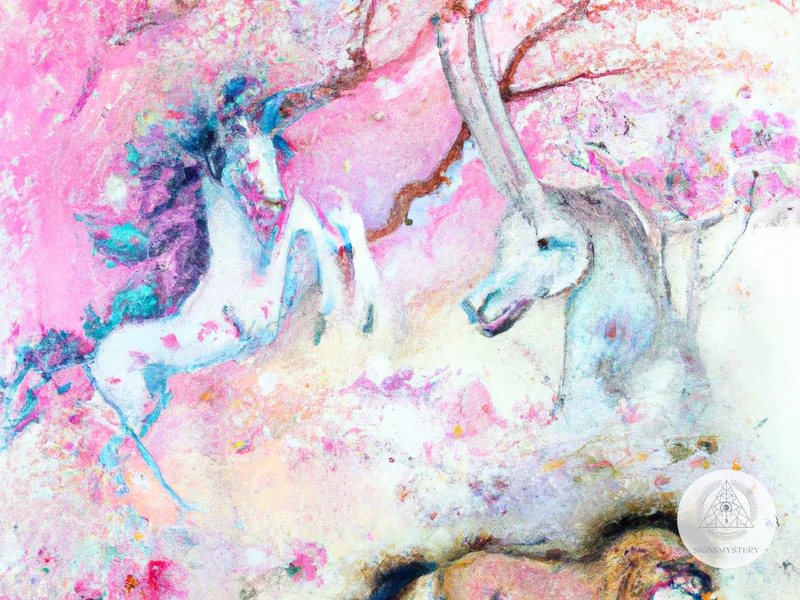
In Japanese culture, the concept of spirit animals holds a profound significance, intertwining both mythology and spirituality. These spirit animals are believed to be divine guides and guardians that provide wisdom, protection, and guidance to individuals and communities. The belief in spirit animals is deeply rooted in the ancient animistic beliefs of the indigenous people of Japan. Animism is the belief that all things in nature, including animals, possess a spiritual essence. According to animistic beliefs, spirit animals act as mediators between the earthly realm and the spirit realm, bridging the gap between humans and the divine. Another significant influence on the concept of spirit animals in Japanese culture is Shintoism, the indigenous religion of Japan. Shintoism reveres nature and its spirits, known as kami. Many animals are considered kami or are associated with specific kami. For example, the fox is closely associated with the kami Inari, the deity of fertility, agriculture, and industry. Additionally, the folklore of Japan is rich with tales of yōkai, supernatural beings that often take the form of animals and can be seen as a type of spirit animal. These yōkai embody various qualities and characteristics, such as mischievousness or protection, and are believed to have a profound impact on the lives of those who encounter them. The concept of spirit animals in Japanese culture is multifaceted, drawing from both indigenous beliefs and religious practices, and continues to be revered and celebrated in various forms of art, literature, and even modern media.
The Role of Animism in Japanese Folklore
The role of animism in Japanese folklore is integral to the concept of spirit animals. Animism, a belief system that attributes spiritual essence to all natural entities, has long been a cornerstone of Japanese culture. In this worldview, every living being, including animals, possesses a divine spirit or soul. This recognition of the interconnectedness of all living things forms the foundation for the reverence bestowed upon spirit animals in Japanese folklore. Animals, seen as embodiments of spiritual power, are deeply respected and revered as intermediaries between humans and the divine. This belief is rooted in the idea that animals possess unique qualities and wisdom that humans can learn from and draw upon for guidance. Japanese animistic beliefs also emphasize the importance of living in harmony with nature, recognizing that humans are part of a larger ecosystem where all beings are interconnected. The spiritual significance of animals in Japanese folklore extends beyond their physical presence, as they are often viewed as messengers, protectors, and sources of divine inspiration. Through rituals, ceremonies, and storytelling, these beliefs are perpetuated and celebrated, solidifying the role of animism in shaping the understanding and reverence towards spirit animals in Japanese culture. Understanding the role of animism is essential in comprehending the cultural significance attached to spirit animals in Japan and the deep-rooted connections between humans, animals, and the spiritual world.
Shintoism and Spirit Animals
Shintoism, the indigenous religion of Japan, plays a significant role in the understanding and reverence of spirit animals within Japanese culture. Shintoism is deeply rooted in the belief that natural phenomena, such as animals, possess divine spirits known as kami. These kami can be found in various forms, including animals, and are considered sacred beings. As such, certain animals hold a special place within Shintoism and are revered as channels through which the kami can manifest. Foxes, for example, are strongly associated with the Inari kami, who is believed to govern fertility, agriculture, and industry. Inari’s messengers are said to be foxes, representing cunning and wisdom. Similarly, the wolf is regarded as a sacred animal in Shintoism, symbolizing strength, loyalty, and protection. Known as Okami, they are believed to guard the mountains and forests. The relationship between Shintoism and spirit animals goes beyond reverence and symbolism. Shrine festivals, known as matsuri, often involve processions where participants don masks resembling different animals to embody the spirit and characteristics associated with them. These rituals allow individuals to connect with the divine by embodying the essence and power of the respective spirit animals. Thus, Shintoism plays a vital role in shaping the understanding and veneration of spirit animals within Japanese culture, enriching the spiritual and cultural tapestry of the nation.
Yōkai: Supernatural Creatures as Spirit Animals
Yōkai, the supernatural creatures of Japanese folklore, are often seen as spirit animals with their own unique symbolism and significance. These mystical beings come in various forms, including animals, and are believed to possess supernatural powers and abilities. Yōkai can represent a wide range of qualities and emotions, from mischievousness and trickery to protection and guidance. One well-known example is the Tanuki, a yōkai closely associated with the raccoon dog. The Tanuki is often depicted as a mischievous creature, playing pranks on humans, but also symbolizing prosperity and good fortune. Another prominent yōkai is the Kappa, a water-dwelling creature resembling a turtle or a humanoid with a beak-like mouth. The Kappa is known for its mischievous and sometimes malevolent nature, but it also serves as a cautionary symbol for drowning prevention. Other yōkai, such as the Kitsune (fox) and the Tengu (crow and hawk), are revered as powerful and wise beings, often associated with intelligence and spiritual guidance. They are considered as both protectors and tricksters, embodying a balance of light and darkness. Yōkai as spirit animals reflect the complex and multifaceted nature of the human experience, reminding individuals of the delicate balance between the supernatural and the ordinary, and the importance of respecting and connecting with the natural world. Their presence in Japanese folklore and culture is a testament to the enduring fascination with the mystical and the profound influence it continues to have on the collective imagination.
Symbolism and Meanings of Spirit Animals
The symbolism and meanings associated with spirit animals in Japanese culture are diverse and captivating. Each spirit animal carries its own unique qualities and characteristics that hold significance in the lives of individuals and the broader cultural context. One prominent spirit animal in Japanese folklore is the kitsune, or fox. The kitsune is often depicted as a wise and cunning creature, symbolizing intelligence, adaptability, and transformation. It is believed to possess shape-shifting abilities and is associated with the kami Inari, as mentioned earlier. The crow and hawk, known as tengu, are revered for their strength and power. They embody attributes such as courage, perseverance, and keen perception. In Japanese culture, fish, particularly the koi, are highly symbolic and represent endurance, determination, and good fortune. The koi’s ability to swim against strong currents and its vibrant colors invoke a sense of resilience and beauty. Another significant spirit animal is the graceful crane. The crane is admired for its elegance, balance, and longevity. It symbolizes peace, harmony, and good luck, often depicted alongside deities and in traditional Japanese art. These spirit animals, with their unique symbolism and meanings, serve as sources of inspiration and guidance for individuals and communities alike. They embody virtues and qualities that people aspire to cultivate in their own lives, making them an integral part of the cultural fabric of Japan.
The Wisdom of the Kitsune: Fox as a Spirit Animal
The fox, known as the kitsune, holds a prominent place in Japanese folklore as a symbol of wisdom and cunning. As a spirit animal, the kitsune represents intelligence, adaptability, and transformation. In Japanese culture, the kitsune is believed to possess supernatural abilities and shape-shifting powers. Legends depict the kitsune taking on human form, often as beautiful women, in order to seduce or deceive individuals. The number of tails the kitsune has is said to represent its age and wisdom, with the most powerful kitsune possessing nine tails. The wisdom of the kitsune is often associated with strategic thinking, problem-solving skills, and keen observational abilities. It is believed that those who are guided by the kitsune as their spirit animal are bestowed with a heightened sense of perception and intuition. This connection to the kitsune can provide individuals with the ability to navigate challenges and make wise decisions. The influence of the kitsune as a spirit animal can be seen in various aspects of Japanese culture, from traditional stories and artwork to contemporary media such as anime and manga. The kitsune serves as a cultural spirit animal that embodies the wisdom and mystique deeply ingrained in Japanese folklore.
The Strength of the Tengu: Crow and Hawk as Spirit Animals
The Tengu, portrayed as part crow and part human, hold a prominent position as spirit animals in Japanese folklore. These legendary creatures are known for their unmatched strength, intelligence, and supernatural abilities. The Tengu are believed to dwell in the mountains and forests, where they act as protectors of these sacred spaces. In Japanese mythology, they are often depicted as skilled warriors, masters of martial arts, and guardians of ancient knowledge. The crow and hawk, which are the most common physical forms associated with the Tengu, represent their connection to the spirit world and their ability to transcend earthly boundaries. The Tengu are revered for their commanding presence and unwavering courage, making them powerful symbols of strength and resilience. These spirit animals are believed to bestow their attributes upon those who resonate with their energy, inspiring individuals to face challenges with determination and unwavering resolve. The Tengu’s significance is not limited to ancient tales; their influence extends to modern times, where they continue to be featured in various forms of art, literature, and popular culture. The enduring presence of the Tengu as spirit animals reminds us of the importance of harnessing our inner strength and embracing our unique powers to overcome obstacles and achieve greatness.
The Tranquility of the Koi: Fish as a Symbolic Spirit Animal
In Japanese folklore, the koi fish holds deep symbolism as a symbolic spirit animal. The koi fish is revered for its beauty, grace, and resilience. It is believed to possess the ability to overcome obstacles and swim against strong currents, representing determination and perseverance. Additionally, the koi fish is associated with tranquility and inner peace. The calm and serene nature of the fish is often seen as a reflection of one’s state of mind and spiritual journey. The koi fish is also considered a symbol of good fortune, abundance, and prosperity. In Japanese culture, it is common to see depictions of koi fish in art, such as paintings and tattoos, as a representation of these positive qualities. The koi fish is often linked to the concept of yin and yang, symbolizing the harmonious balance between opposing forces. The contrasting colors of the fish, with its vibrant scales, further emphasize this duality and the interconnectedness of all things. The symbolism associated with the koi fish as a spirit animal continues to inspire and captivate people, reminding them of the importance of finding peace and resilience in the midst of life’s challenges.
The Grace of the Kitsune: Crane as a Spirit Animal
The crane, known as the “tsuru” in Japanese, is a majestic and graceful bird that holds great symbolic meaning as a spirit animal in Japanese culture. Revered for its elegance and beauty, the crane is a symbol of longevity, good fortune, and fidelity. In Japanese folklore, the crane is associated with the mythical creature known as the “kitsune,” or fox. The kitsune is believed to possess the ability to shape-shift into different forms, and when it takes on the appearance of a crane, it represents a sense of tranquility and grace. The crane is often depicted in Japanese art, such as ukiyo-e prints, where it is portrayed in various poses, symbolizing different aspects such as happiness, longevity, and wisdom. Additionally, the crane has also inspired poets and writers throughout history, appearing in traditional Japanese haiku and tanka poetry. The presence of the crane as a spirit animal reminds individuals to embrace gracefulness and find peace within oneself. Its symbolism extends beyond physical attributes, representing a deeper spiritual connection with the natural world. The crane’s elegant presence serves as a reminder to find balance, seek inner harmony, and appreciate the beauty that surrounds us. Embracing the grace of the crane as a spirit animal can bring a sense of serenity and mindfulness into one’s life, allowing for personal growth and a deeper connection with the world around us. For a similar exploration of the mythical phoenix as a spirit animal, you can read our article on the unraveling mysteries of the phoenix as a spirit animal.
Depiction of Spirit Animals in Japanese Art and Literature
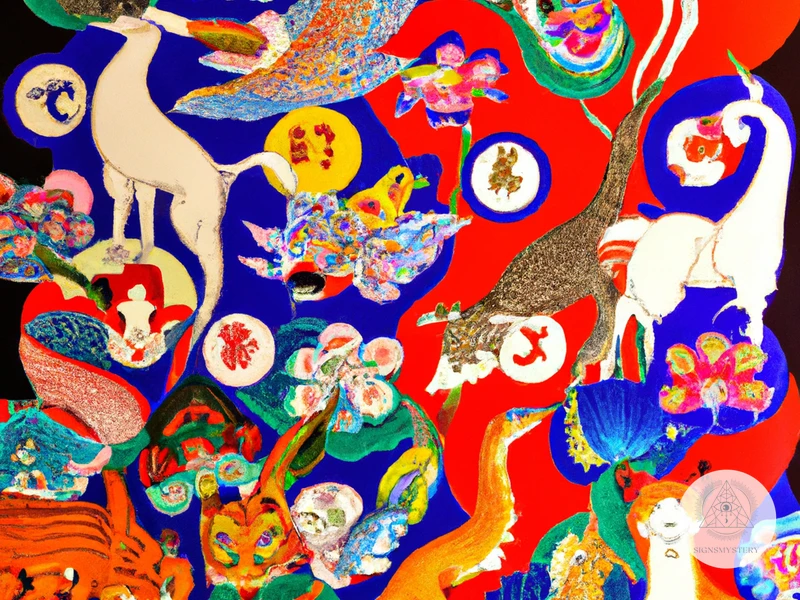
Depictions of spirit animals in Japanese art and literature are a testament to the profound influence and significance that these mystical creatures hold in the culture. In traditional Japanese art, such as ukiyo-e woodblock prints, spirit animals are often portrayed with great intricacy and attention to detail. The fox, known as the kitsune, is a popular subject in ukiyo-e prints and is frequently depicted with multiple tails, symbolizing its supernatural nature and wisdom. The crane, another revered spirit animal, is often depicted in graceful and elegant poses, representing tranquility and longevity. Ukiyo-e woodblock prints showcase the beauty and symbolism of spirit animals, allowing viewers to connect with the deeper meanings associated with these creatures.
Japanese literature also pays homage to spirit animals, with poetry playing a significant role in exploring their symbolism. Haiku, a traditional form of Japanese poetry, often incorporates nature and spirit animals as central motifs. The concise and evocative nature of haiku allows for the expression of profound thoughts and emotions related to the essence of spirit animals. These poems capture the essence of the fox’s wisdom, the crow and hawk’s strength, and the fish’s tranquility, among others.
Japanese literature is replete with legendary stories that feature heroes accompanied by spirit animals. These tales highlight the bond between humans and their spirit animal counterparts, emphasizing their shared journeys and the lessons learned from these divine companions. These stories captivate the imagination and showcase the enduring appeal of spirit animals as characters in Japanese literature.
The depiction of spirit animals in Japanese art and literature serves as a testament to the cultural importance and symbolism associated with these creatures. Through visual and literary mediums, the beauty and meaning of spirit animals are brought to life, allowing individuals to connect with their wisdom, strength, and grace. These artistic expressions continue to be cherished and celebrated for their ability to convey the profound significance that spirit animals hold within Japanese culture.
Ukiyo-e: Woodblock Prints Featuring Spirit Animals
Ukiyo-e, a popular form of Japanese art during the Edo period (1603-1868), often featured woodblock prints that showcased various spirit animals. These prints played a significant role in capturing the essence and symbolism of these revered creatures. One iconic example is the depiction of the kitsune (fox) in ukiyo-e prints. The fox, considered a spirit animal associated with wisdom and shape-shifting abilities, was a common subject in these artworks. The prints often showcased the kitsune in various settings and poses, highlighting its connection to both the human and spiritual realms. Another notable spirit animal found in ukiyo-e prints is the tengu (crow and hawk). Tengu, known for their intelligence and magical powers, were depicted with their distinctive long noses, wings, and fierce expressions. These prints captured the duality of the tengu’s nature, representing both their spiritual qualities and their connection to the natural world. Additionally, other spirit animals such as the crane and koi fish were also celebrated in ukiyo-e prints. The grace and elegance of the crane were beautifully portrayed, often in tranquil landscapes surrounded by nature. The koi fish, a symbol of perseverance and good fortune, was depicted with vibrant
Subscribe to Our Newsletter
Sign up to receive the latest news and updates.
Haiku and Spirit Animals: Symbolism in Japanese Poetry
Haiku, a traditional form of Japanese poetry, is known for its brevity and ability to capture the essence of a moment or scene. Within the realm of haiku, spirit animals play a significant role, symbolizing various emotions, insights, and connections to the natural world. These short poems often incorporate animal imagery to convey deeper meanings and evoke a sense of wonder and contemplation. For example, the image of a gentle butterfly fluttering by might represent fragility and ephemeral beauty, while a soaring bird could signify freedom and liberation. The choice of a particular spirit animal in a haiku is deliberate and intentional, as each animal carries its own symbolic associations and cultural significance. Additionally, haiku poets frequently draw inspiration from the natural world, finding harmony and interconnectedness with spirit animals in their verses. By incorporating spirit animals into their haiku, poets strive to capture the essence of these creatures and their symbolic meanings, inviting readers to reflect on the delicate balance between humans and the animal kingdom. Through the art of haiku, spirit animals continue to inspire and guide the poetic expression of the Japanese people, fostering a deeper appreciation and understanding of both nature and the human spirit.
Legendary Stories: Heroes Accompanied by Spirit Animals
Legendary stories in Japanese folklore are replete with tales of heroes accompanied by spirit animals. These heroes are often granted the guidance and assistance of a spirit animal, enhancing their strength and abilities. One famous example is the legendary figure of Momotarō, meaning “Peach Boy.” In this folk tale, Momotarō is born from a peach and grows up to become a courageous hero. As he embarks on a quest to defeat a band of demons, he is accompanied by three faithful companions: a dog, a monkey, and a pheasant. Each of these animals possesses unique skills and attributes that aid Momotarō in his quest, highlighting the importance of spirit animals as allies and protectors. Another iconic character accompanied by a spirit animal is the samurai warrior Minamoto no Yoshitsune, who is often depicted with a faithful white deer by his side. According to legend, this sacred deer served as Yoshitsune’s protector, guiding and warning him of impending danger. These legendary stories not only showcase the close bond between heroes and their spirit animals, but also emphasize the symbolic significance of these animals in providing strength, guidance, and protection. Through these tales, spirit animals continue to inspire and captivate the imagination of generations, shaping the cultural landscape of Japan.
Modern Interpretation of Spirit Animals in Japanese Culture
In modern Japanese culture, the interpretation of spirit animals has evolved and found new expressions in various art forms and media. One prominent medium where spirit animals are depicted is anime and manga. These popular forms of entertainment often feature characters who possess a deep connection with their spirit animals, which manifest as companions or sources of power. This portrayal showcases the enduring fascination with the spiritual realm and the belief that animals can serve as guides and protectors. One prime example is the series “Natsume’s Book of Friends,” where the protagonist can see and interact with yōkai, including animal-like spirits. These stories explore the complex relationships between humans and spirit animals, emphasizing the importance of respect, understanding, and harmony in their interactions. Additionally, contemporary Japanese art continues to depict spirit animals in various forms. Artists use different mediums, including paintings, sculptures, and installations, to capture the essence and symbolism of these spiritual beings. In these artworks, spirit animals are often portrayed in a more abstract or symbolic manner, representing specific qualities or emotions rather than being literal depictions of animals. The modern interpretation of spirit animals in Japanese culture reflects an ongoing reverence for the connection between humans and the natural world and the belief in the profound influence of these spiritual guides.
Spirit Animals in Anime and Manga
Anime and manga, two popular forms of Japanese entertainment, often incorporate the concept of spirit animals into their narratives. These mediums have a unique way of bringing these mystical creatures to life, captivating audiences with their imaginative portrayals. In anime and manga, spirit animals are often depicted as familiar companions or allies to the main characters, providing guidance, protection, and even mystical powers. One of the most iconic examples is the Pokémon franchise, where each Pokémon represents a different species of creature and possesses its own unique abilities and characteristics. These Pokémon can be seen as spirit animals that form a strong bond with their trainers, reflecting the idea of a spiritual connection between humans and animals. In the anime series “Natsume’s Book of Friends”, the main character Natsume can see and communicate with yōkai, many of whom take on the forms of animals. These yōkai serve as spirit animal guides, helping Natsume navigate the spiritual realm and providing him with insights and assistance. Anime and manga not only introduce the concept of spirit animals to a wide audience but also allow for creative interpretations and storytelling that explore the richness and diversity of these supernatural beings.+
Spirit Animals in Contemporary Japanese Art
Spirit animals continue to hold a special place in contemporary Japanese art, serving as a source of inspiration and symbolism for many artists. In the realm of modern art, spirit animals are often depicted in various mediums, including paintings, sculptures, and digital art. These representations not only showcase the artist’s creativity but also convey deeper meanings and cultural connections. One prominent example is the work of Takashi Murakami, a renowned Japanese contemporary artist. His vibrant and whimsical art often incorporates elements of traditional Japanese culture, including spirit animals. In his pieces, Murakami skillfully combines traditional imagery with modern aesthetics, creating a fusion of past and present. Through his art, he explores the themes of spirituality, identity, and the interconnectedness of humans and nature. Another influential artist, Kohei Nawa, incorporates spirit animals into his sculptures. His work often features animals, such as deer and wolves, coated in reflective surfaces, creating a sense of ethereality and blurring the boundaries between the physical and spiritual realms. Nawa’s sculptures invite viewers to contemplate the relationship between humans, animals, and the intangible forces that connect them. In the digital art realm, artists like Chiho Aoshima blend traditional Japanese motifs with futuristic elements, creating mesmerizing and otherworldly scenes that often include spirit animals. These contemporary artists use spirit animals as a means to explore themes of tradition, spirituality, and the complex relationship between humans and nature in the context of modern society. Through their art, they not only pay homage to the rich cultural heritage of Japan but also invite viewers to contemplate their own connection to the natural world and the spirits that dwell within it.
Conclusion
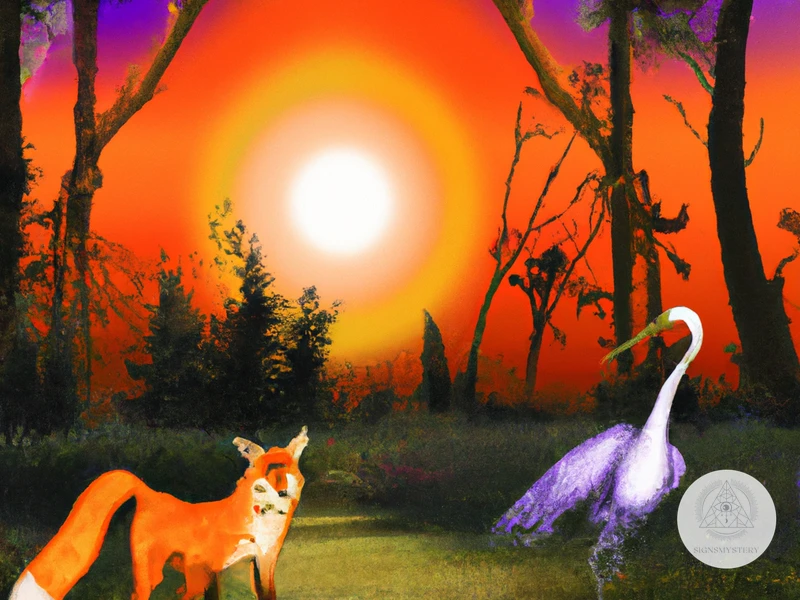
In conclusion, the concept of spirit animals in Japanese culture holds a deep-rooted significance that intertwines ancient beliefs, mythology, and artistic expressions. The profound symbolism and meanings associated with spirit animals reflect the enduring connection between humans and the natural world. From the wisdom of the kitsune to the strength of the tengu, and the grace of the crane, these spirit animals embody qualities and characteristics that are valued and cherished in Japanese society. The depiction of spirit animals in various art forms, such as ukiyo-e prints and haiku poetry, further emphasizes their importance and provides a medium for contemplation and interpretation. Additionally, the presence of spirit animals in contemporary Japanese art and popular media, such as anime and manga, showcases their continued relevance and adaptability in modern times. As we delve into the intricate tapestry of Japanese folklore and culture, the significance of spirit animals becomes apparent, serving as a bridge between the physical and spiritual worlds and offering guidance, protection, and inspiration to all who embrace their wisdom. The legacy of these mystical creatures endures, reminding us of our connection to nature and the timeless wisdom they impart.
Frequently Asked Questions
What are the benefits of connecting with your spirit animal?
Connecting with your spirit animal can provide guidance, protection, and a deeper understanding of oneself. They offer wisdom and support in navigating life’s challenges.
Can anyone have a spirit animal?
Yes, anyone can have a spirit animal. Spirit animals are believed to be personal guides that can be discovered through introspection, meditation, or through experiences and encounters in the natural world.
How do you discover your spirit animal?
Discovering your spirit animal can be a deeply personal and intuitive process. It may involve introspection, dream analysis, or meditation. Pay attention to recurring themes or animals that seem to appear frequently in your life.
Can your spirit animal change?
Yes, your spirit animal can change throughout your life. Different animals may appear to provide guidance during different phases or challenges, reflecting your evolving spiritual journey.
Are spirit animals limited to actual animals?
No, spirit animals can extend beyond actual animals. In Japanese folklore, yōkai, which are supernatural creatures, can also serve as spirit animals. These beings may take the form of mythical creatures or even inanimate objects.
Do spirit animals have specific meanings?
Yes, spirit animals often carry specific meanings and symbolism. For example, the fox (kitsune) represents wisdom and cunning, while the crow and hawk (tengu) embody strength and power.
Can you have more than one spirit animal?
Yes, it is possible to have more than one spirit animal. Multiple spirit animals may appear at different times to offer guidance and support in various aspects of your life.
Can you choose your spirit animal?
It is believed that your spirit animal chooses you rather than the other way around. It is a spiritual connection that unfolds naturally and reveals itself through signs and experiences.
Can spirit animals appear in dreams?
Yes, spirit animals can appear in dreams as messengers or symbols. Dreams can provide valuable insights and messages from the spiritual realm, including encounters with spirit animals.
What is the significance of spirit animals in Japanese art and literature?
Spirit animals have been a prominent theme in Japanese art and literature for centuries. They serve as symbols of deeper meanings and convey cultural values such as wisdom, strength, and tranquility.
References
- 10 Symbolic Animals in Japanese Culture
- Japanese animals: mythology and symbolism
- Sacred Mythological Animals of Japan and Their Meanings
Frequently Asked Questions
What are spirit animals in Japanese folklore?
Spirit animals in Japanese folklore are symbolic creatures that hold significant meaning and importance in Japanese culture. They are believed to embody specific qualities and characteristics, representing a connection between the physical and spiritual realms.
What is the significance of animism in Japanese folklore?
Animism, a belief that all things have a spiritual essence, plays a crucial role in Japanese folklore. It is the foundation for the concept of spirit animals, as it fosters a sense of reverence and respect for all living creatures and natural elements.
How does Shintoism relate to spirit animals in Japanese folklore?
In Shintoism, an indigenous religion of Japan, there is a deep connection between nature, spirits, and humans. This belief system recognizes certain animals as sacred and has rituals and festivals dedicated to honoring these spirits, further emphasizing the significance of spirit animals.
What are yōkai and how are they connected to spirit animals?
Yōkai are supernatural creatures in Japanese folklore that often serve as spirit animals. They can take the form of various animals and possess different characteristics, representing both positive and negative aspects of human nature.
What does the kitsune symbolize as a spirit animal?
As a spirit animal, the kitsune, or fox, symbolizes wisdom, cunning, and transformation. It is often depicted as a shape-shifting creature that possesses magical abilities and serves as a messenger between the human and spirit worlds.
What do crows and hawks represent as spirit animals in Japanese culture?
Crows and hawks are associated with strength, intelligence, and protection as spirit animals in Japanese culture. They are believed to be messengers of the gods and guardians against evil forces.
What does the koi fish symbolize as a spirit animal?
The koi fish is a symbolic spirit animal that represents perseverance, determination, and good fortune. It is often associated with overcoming obstacles and achieving success.
What qualities does the crane embody as a spirit animal?
The crane is a graceful and elegant spirit animal that symbolizes longevity, wisdom, and good fortune. It is often seen as a symbol of peace and harmony.
How are spirit animals depicted in Japanese art and literature?
Spirit animals are commonly depicted in Japanese art and literature, showcasing their cultural significance. They are often portrayed in woodblock prints, featured in symbolic poetry such as haiku, and play prominent roles in legendary stories and myths.
How are spirit animals represented in modern Japanese culture?
In modern Japanese culture, spirit animals continue to hold significance and are often incorporated into various forms of media. They appear in anime, manga, and contemporary art, reflecting their enduring presence in Japanese society.



